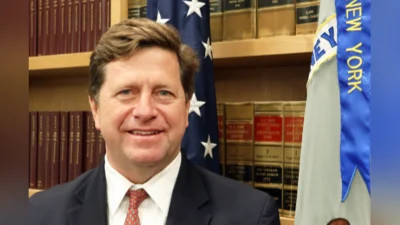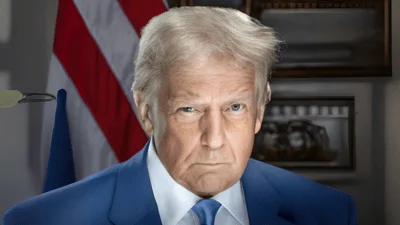WASHINGTON, D.C. - Today, U.S. Senator John Barrasso (R-WY), chairman of the Senate Committee on Environment and Public Works (EPW) and Committee Ranking Member Tom Carper (D-DE) applauded the passage of the environmental innovation legislation in the omnibus.
The omnibus included:
* The Utilizing Significant Emissions with Innovative Technologies (USE IT) Act to promote carbon capture technologies;
* The reauthorization of the Diesel Emissions Reduction Act (DERA) program; and
* The American Manufacturing and Innovation (AIM) Act, which would implement a 15-year phasedown of hydrofluorocarbons (HFCs) at a national level for the first time, administered by Environmental Protection Agency (EPA).
“Congress has passed historic, bipartisan climate innovation legislation," said Barrasso. “This is the most significant greenhouse gas reduction bill to ever pass Congress and it won't raise costs for American families. It will help support the development of groundbreaking technologies like carbon capture, while also reducing emissions from our school busses, trucks, and homes. Free market innovation is the key to addressing a changing climate. This bipartisan legislation proves we can protect our environment without punishing our economy. I am thankful to Ranking Member Carper and Senators Capito, Whitehouse, and Kennedy for their partnership and I look forward to President Trump signing it into law."
“The climate crisis is here and it's up to us to decide what we want to do about it. If we're smart about it, we'll seize the economic opportunity that comes with taking decisive climate action. We will take action that improves and protects our planet while supporting new, good-paying jobs and more economic opportunity in every corner of this country. These provisions are a great example of that," said Carper. “For example, by joining the rest of the world to phase down HFCs, we can help to avoid a half degree Celsius in global warming while giving a boost to American manufacturers and creating tens of thousands of new jobs here at home. Although these provisions are the products of years of hard work, really, this is just the beginning. Tonight Congress proved that we can work together in a bipartisan way to enact significant climate legislation. Just imagine what we will do next. I thank Chairman Barrasso for his partnership on many of these issues, and I look forward to the work ahead of the Committee next Congress."
The USE IT Act supports carbon utilization and direct air capture research. This type of research is already taking place at research facilities like the Integrated Test Center outside of Gillette, Wyoming. The bill also supports federal, state, and non-governmental collaboration in the construction and development of carbon capture, utilization, and sequestration (CCUS) facilities and carbon dioxide (CO2) pipelines. The USE IT Act was introduced by Barrasso, Carper, Senators Shelley Moore Capito (R-WV), Sheldon Whitehouse (D-RI) and several other senators.
The DERA program has reduced black carbon emissions by more than 11,000 tons and carbon dioxide by more than 5 million tons. The legislation will reauthorize this important program until 2024.
The HFC provisions will authorize a 15-year phasedown of HFCs at a national level for the first time, administered by Environmental Protection Agency (EPA). The amendment requires EPA to implement an 85 percent phasedown of the production and consumption of HFCs, so they reach approximately 15 percent of their 2011-2013 average annual levels by 2036. The legislative language matches the agreement reached earlier this year by Barrasso, Carper, and Senator John Kennedy (R-LA) that protected essential uses of HFCs.
Background Information:
USE IT Act:
On July 23, 2020, the Senate passed the USE IT Act as part of the FY 2021 National Defense Authorization Act (NDAA).
On June 27, 2019, the USE IT Act passed the Senate as part of the FY 2020 NDAA.
On April 10, 2019, the EPW Committee unanimously passed the USE IT Act at an EPW Committee business meeting.
On Feb. 27, 2019, the EPW Committee held a legislative hearing on S. 383. All three witnesses testified in support of the bill: Paul Sukut, General Manager & CEO, Basin Electric Power Cooperative; Steve Oldham, CEO, Carbon Engineering; and Kurt Waltzer, Managing Director, Clean Air Task Force.
On February 7, 2019, Barrasso joined with Whitehouse and Carper to reintroduce the USE IT Act. Senators Shelley Moore Capito (R-WV), Tammy Duckworth (D-IL), Kevin Cramer (R-ND), Tina Smith (D-MN), Joe Manchin (D-WV), and Mike Enzi (R-WV) also joined as original cosponsors.
The USE IT Act was first introduced during the 115th Congress. The EPW Committee also advanced the legislation unanimously in 2018.
DERA:
On July 23, 2020, the Senate passed S. 747, the Diesel Emissions Reduction Act (DERA) of 2019 as part of the FY 2021 NDAA.
On April 10, 2019, the EPW Committee unanimously passed DERA at an EPW Committee business meeting.
On March 13, 2019, the EPW Committee held a legislative “Hearing to Examine S. __, Diesel Emissions Reduction Act (DERA) of 2019."
AIM Act:
On Sept. 10, 2020 Barrasso, Kennedy, and Carper announced an agreement to update the AIM Act amendment to the American Energy Innovation Act.
On March 25, 2020, the EPW Committee began an information-gathering process to hear feedback from different stakeholders on the AIM Act.
On March 5, 2020, Kennedy and Carper offered the AIM Act as an amendment to the American Energy Innovation Act.
On Nov. 1, 2019, Carper and Kennedy introduced the American Manufacturing and Innovation (AIM) Act.









